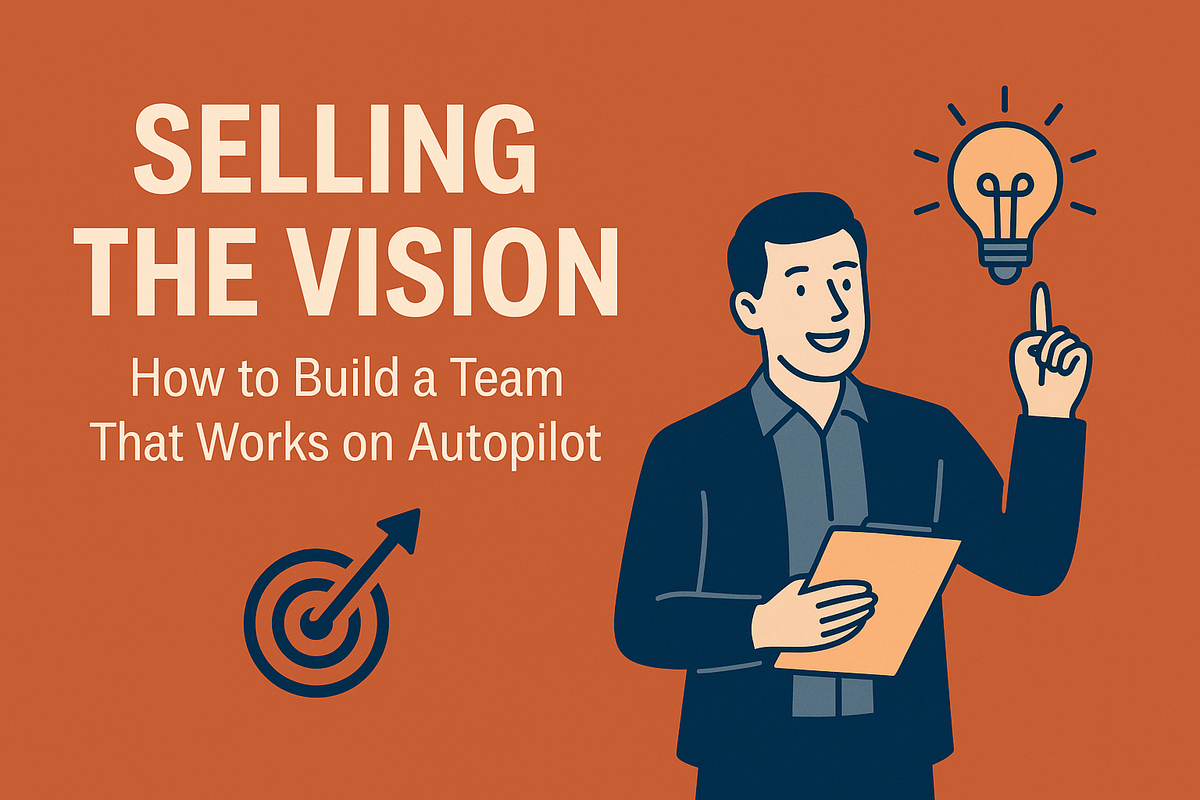There’s a moment in every product leader’s journey when they realize:
The secret to sustainable velocity isn’t tighter deadlines. It’s shared vision.
When your team gets the “why” behind what they’re building, execution becomes frictionless. Prioritization becomes second nature. You stop babysitting. You start scaling.
If you're constantly nudging, chasing, or course-correcting—you're not managing a team, you're managing lack of clarity.
It’s time to sell the vision so well that your team doesn’t just follow orders — they self-navigate.
When your team deeply understands the product vision, they can:
· - Make high-quality decisions without waiting for approvals
· - Push back when features feel off-track
· - Spot innovation opportunities you didn't see
· - Deliver consistently — even in ambiguity
Features don’t inspire people. Missions do.
To flip the switch:
· - Translate business goals into user impact stories
· - Tie tasks to customer outcomes, not internal noise
· - Reframe your backlog around the problems you're solving — not just tech specs
Example:
Instead of saying “We need to implement onboarding flow v2,” say “Let’s reduce drop-off so 30% more users experience their first win.”
Vision isn’t a keynote slide. It’s a daily tool.
Embed context into everyday workflows:
· - Start sprint planning by revisiting the product north star
· - Share customer feedback religiously
· - Encourage engineers to attend discovery sessions
· - Create visual dashboards of product impact metrics
When you sell the vision, don’t hoard the steering wheel.
Enable autonomy:
· - Give autonomy in how goals are achieved
· - Involve devs/designers in tradeoff decisions
· - Let teams run experiments — and learn from failures
When people feel ownership, they show up like owners.
Done isn’t when the code is merged. Done is when the impact is measured.
Teach your team to think in outcomes:
· - Did we solve the right problem?
· - Are users behaving differently?
· - Did it move the metrics we care about?
· - Standups are focused on outcomes, not tasks
· - Engineers proactively suggest roadmap changes
· - Designers call out UX mismatches early
· - QA becomes a strategic partner, not a bottleneck
· - You, as the leader, stop micromanaging — and start amplifying
You don’t build a team that runs on autopilot by hiring superhumans.
You build it by giving clarity, context, and trust.
If you’re a product leader, your real job isn’t just managing velocity — it’s managing vision.
When everyone rows in the same direction, you don’t just go faster — you go farther, with less burn.
So sell the vision. Hard. Often. Visibly.
Because when the team believes, they don’t just build the product — they build the future.



 Dojo Suggestion
Dojo Suggestion


